Budae Jjigae: Ultimate Korean Army Stew
Budae Jjigae is Korean army stew with a fusion twist. Made with Spam, kimchi, and ramen, this iconic dish is perfect for communal dining. Learn the rich history and flavors of this Korean-American fusion dish, and follow the step-by-step recipe for a hearty meal.
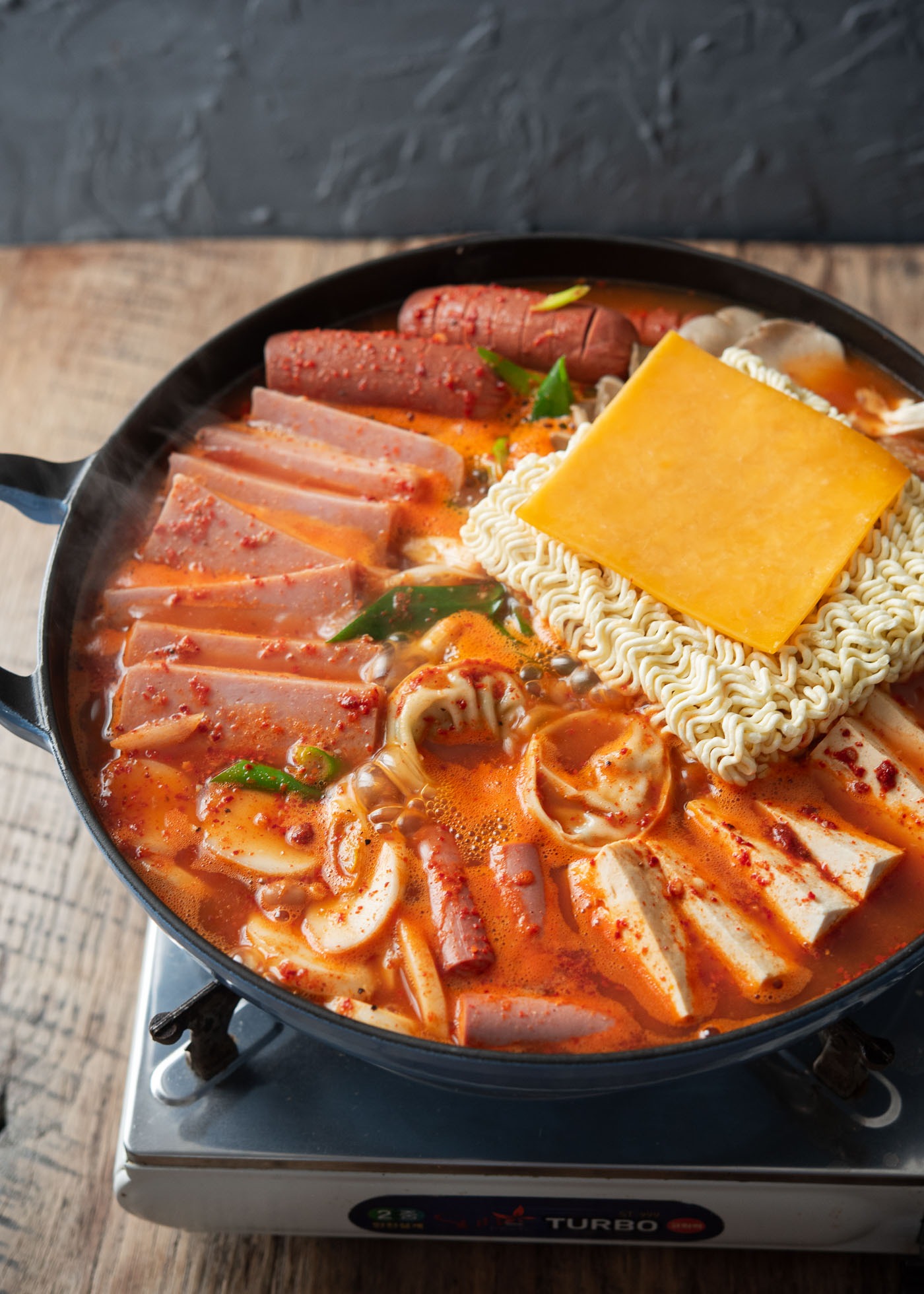
“Made the stew a few days ago. It was a total hit. Pan was licked clean in no time. We will definitely be having this again. Extremely convenient. Perfectly spiced, the umami was oooooo mama”
SuZQ
In Korea, a hot pot of Budae Jjigae, or Korean army stew, often takes center stage at dinner. It’s another must-try dish from the nation’s rich culinary tradition.
My college years in Korea were flavored with Budae Jjigae. Venturing to Uijeongbu, the dish’s birthplace, was a ritual. Those trips brimming with laughs, the soothing sound of simmering stew, and its enticing aroma have etched a special place in my memories.
History of Budae Jjigae
“Budae” signifies a military base in Korean, and “Jjigae” translates to stew. Their union gives us “Army Base Stew”, capturing its unique historical essence.
Emerging from the post-war ashes of 1953, this stew became more than food – it symbolized Korean resilience. With the nation’s economy grappling, many sought sustenance from U.N. and U.S. relief, notably surplus processed meats from American bases.
The ingenious merger of American canned produce with traditional Korean essences birthed this Korean-American fusion dish. From its modest inception, Budae Jjigae has risen as an iconic South Korean culinary marvel.
Get new recipes via email
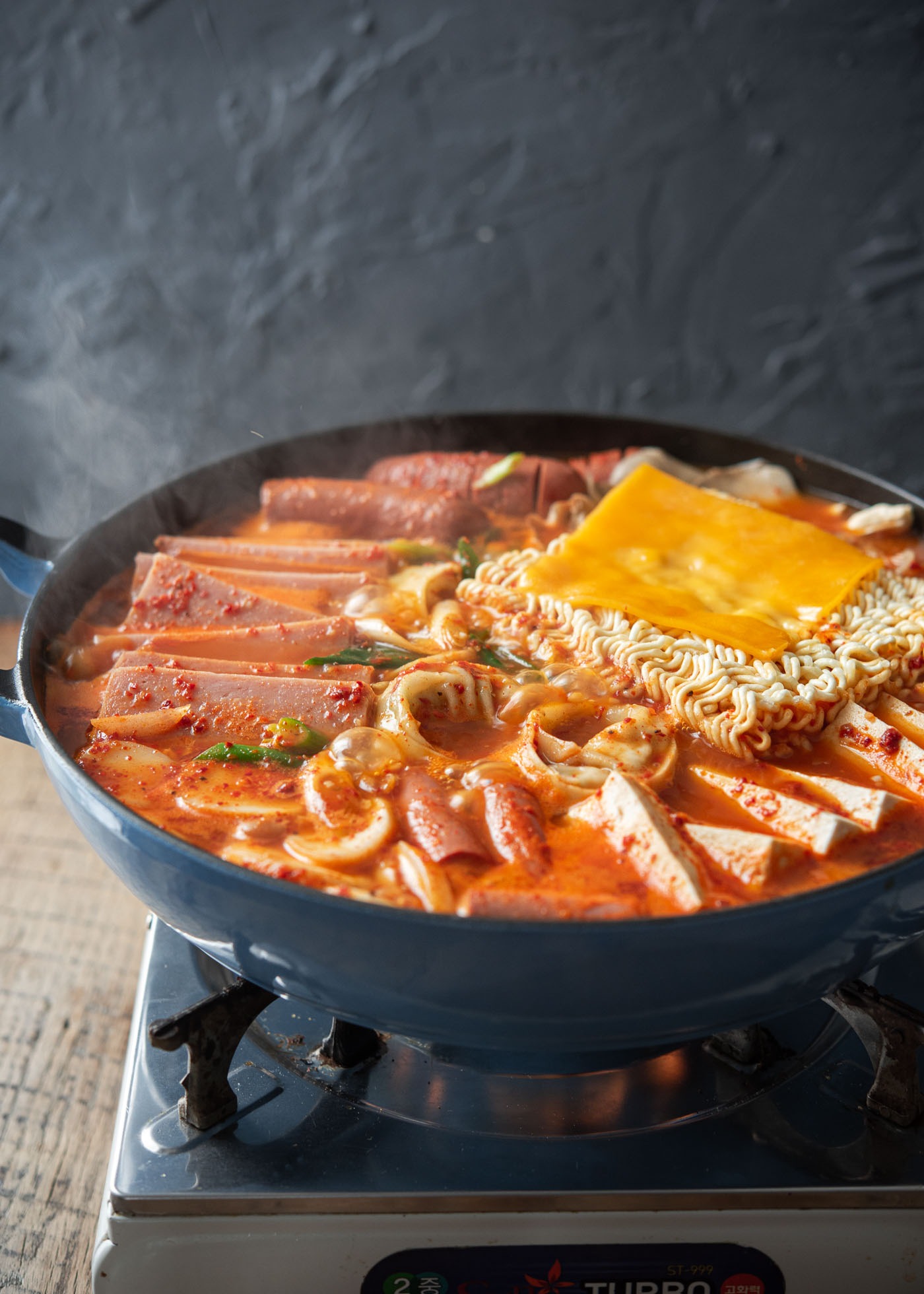
In Popular Culture
Anthony Bourdain’s culinary adventures led him to this unique stew on CNN’s Parts Unknown. For many Koreans, dishes like this and the beloved dalgona candy evoke a deep-seated nostalgia, reminiscing both bygone hardships and the joys of shared meals.
Honestly, my tryst with this stew began in my 20s. To my parents, it possibly echoed the trying post-war times. Yet, for countless Koreans, this military stew is a trip down memory lane, a lesson in humility, and a testament to the nation’s undying spirit.
Recipe Ingredients
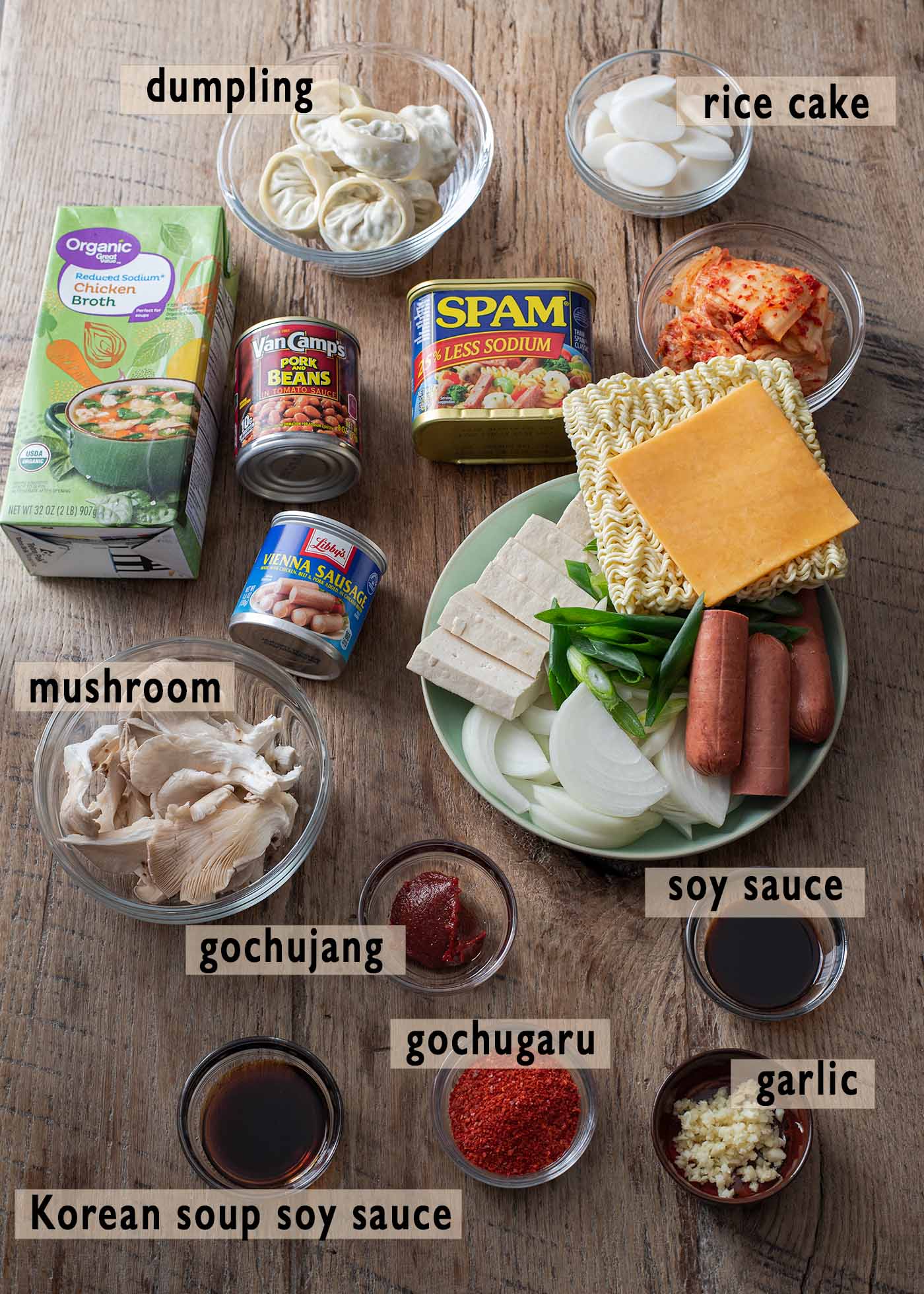
While the ingredient list might seem extensive, it offers flexibility. Adapt it to available ingredients or personal preferences. After all, the best recipes are often the ones you make your own.
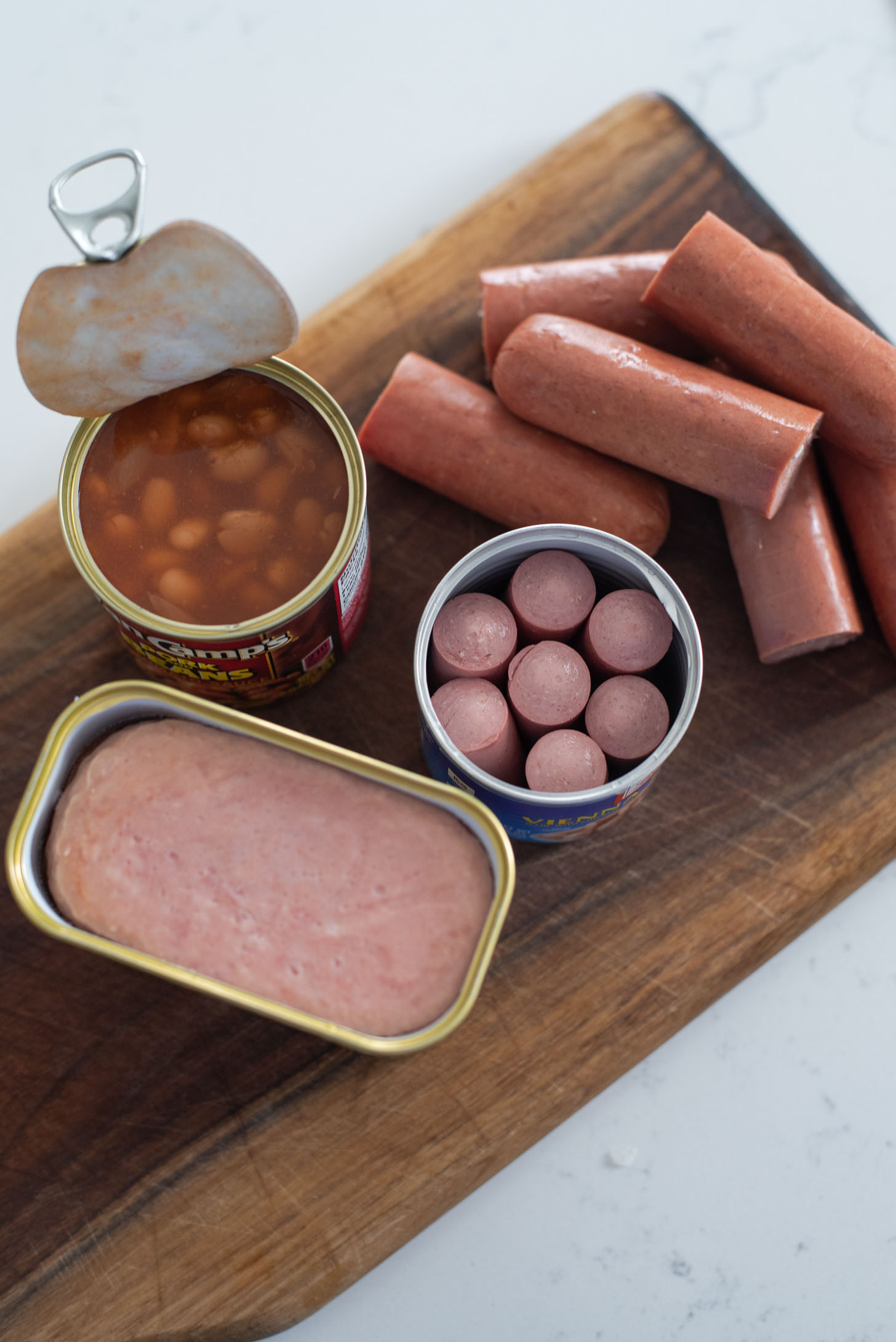
Essential ingredients
- Spam: Opt for low-sodium
- Pork & beans: An integral part for that signature taste.
- Hot dogs and/or sausage: more processed meat to make it hearty and add umami flavor.
- Kimchi: Sour kimchi is what makes this stew “fusion”
- Stock: Chicken stock lends depth; alternatively, try beef bone broth or anchovy kelp stock.
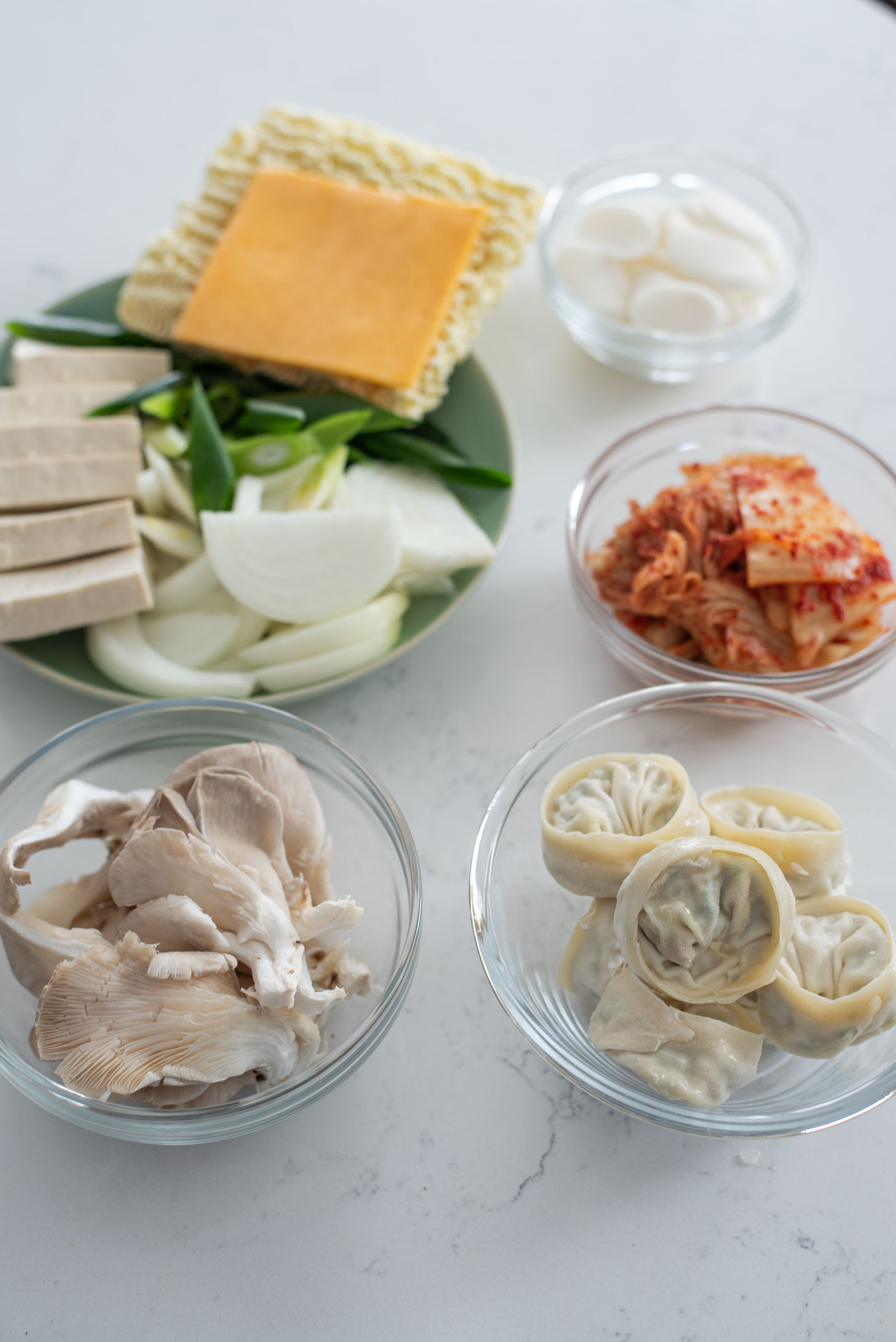
Popular Additions for Heartier Stew
Elevate your army stew with these additional ingredients:
- Protein: Pork belly or ground pork.
- Tofu: Soft tofu, it soaks in flavors brilliantly.
- Instant ramen noodles: Preferably Korean ramen noodles.
- Cheese: Cheddar’s my pick, but American cheese works too.
- Aromatics: Onions, green onions.
- Mushroom: Any mushroom of your choice. I used oyster mushroom.
Optional Ingredients for Personal Touch
Mix it up with dumplings, rice cakes, or Korean glass noodles.
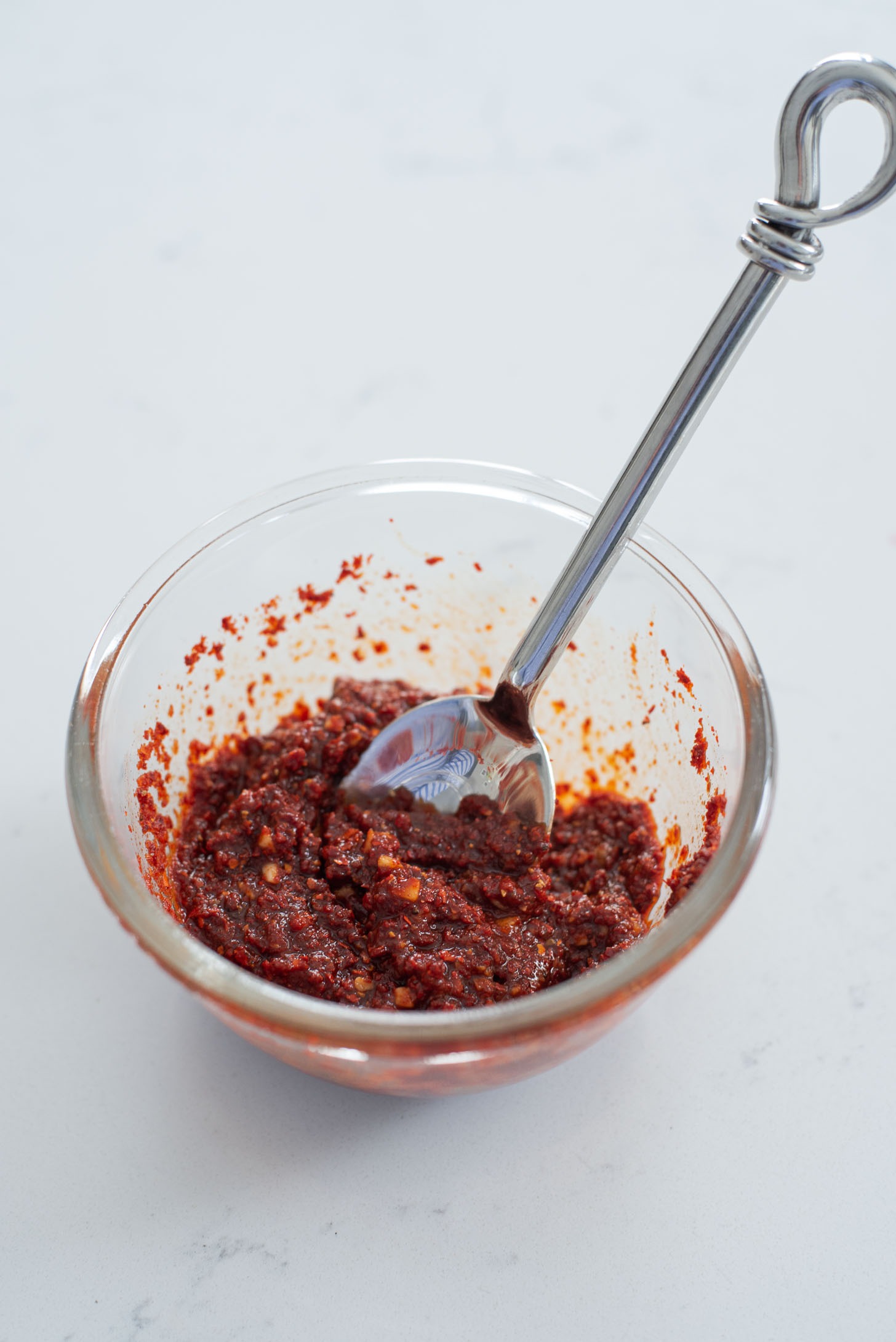
Budae jjigae seasoning sauce
Since all the add-ins are the typical ingredients, what makes the best budae jjigae is in the seasoning sauce you flavor the broth. Try mixing up the following ingredients to make the best tasting army stew.
- Korean chili flakes (gochugaru): Adjust the amount depending on your heat tolerance
- Korean chili paste (gochujang): adds savory taste and thicken the broth
- Soy sauce and soup soy sauce: adds umami and seasoning
- Garlic: savory addition
Recipe Notes & Tips for Success
- Make your budae jjigae in a large, shallow pan to hold all the ingredients.
- I usually opt for store-bought chicken stock which saves time.
- Alternatively, try the homemade dried kelp & anchovy stock or beef stock. For the latter, see my tteokguk recipe.
- Cook your Korean stew on a portable burner right at the table, and have people pick out what they like to eat while the stew is simmering. (Most of the ingredients don’t take long to cook)
- Remember, noodles absorb liquid. Consume the noodles first and refill with extra stock if needed. It’s the traditional way at Korean restaurants!
Step-by-Step Guide to Making Budae Jjigae
Step 1. Prepare the Signature Sauce
- Blend the chili flakes, gochujang, soy sauces, garlic, and pepper. Keep aside.
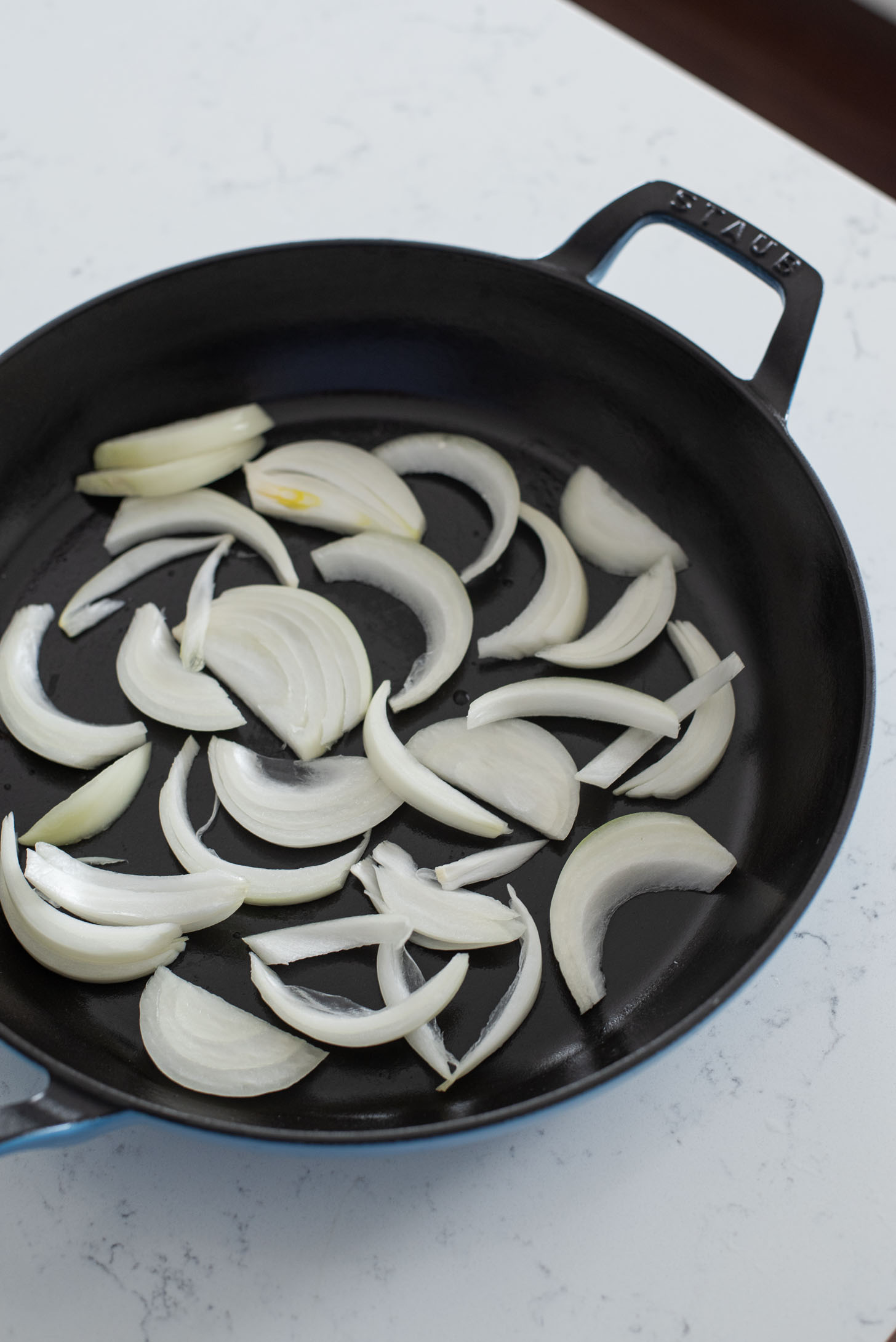
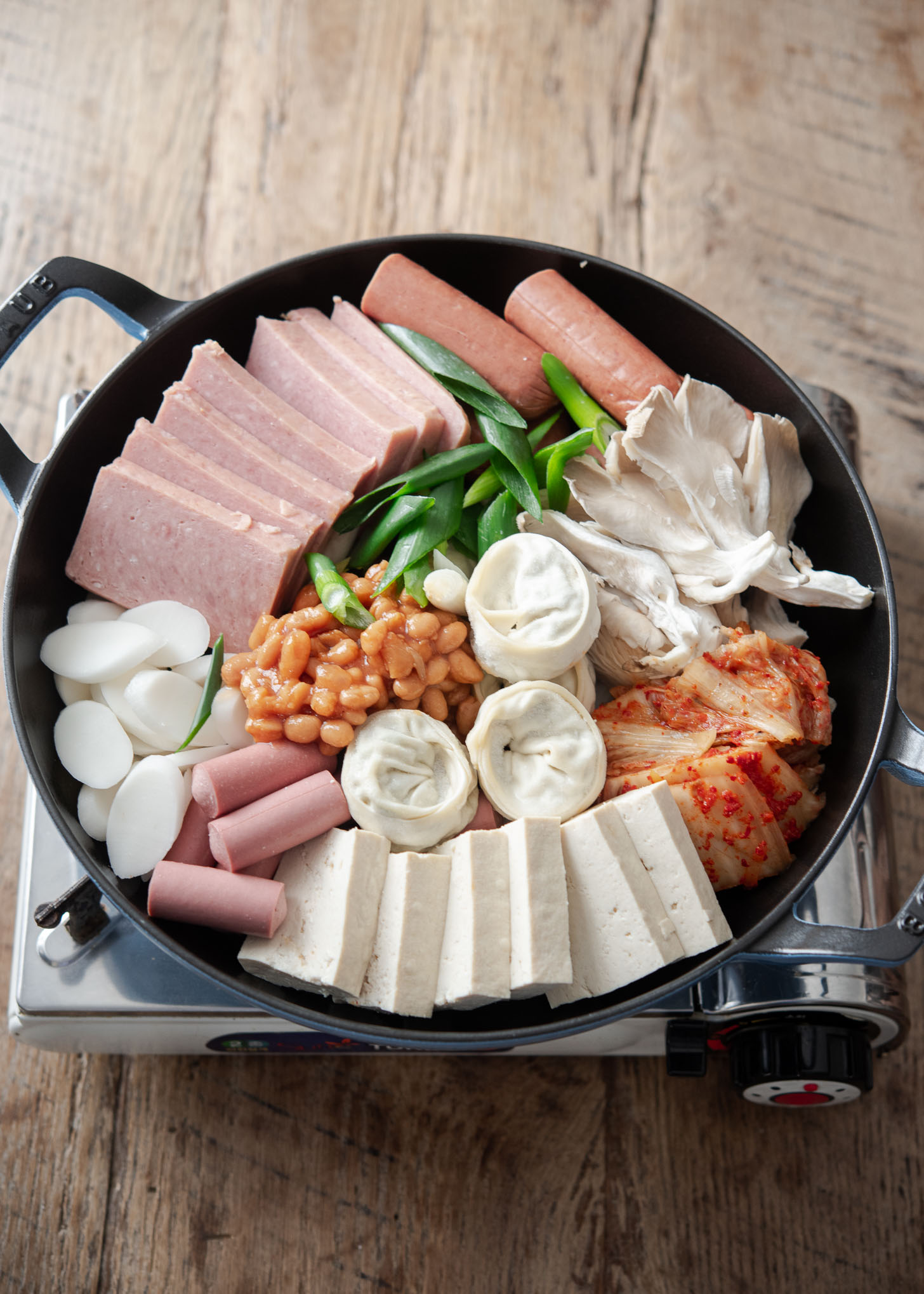
Step 2. Layer the Ingredients
- Begin with onions at the pan’s base, then arrange your choice of ingredients.
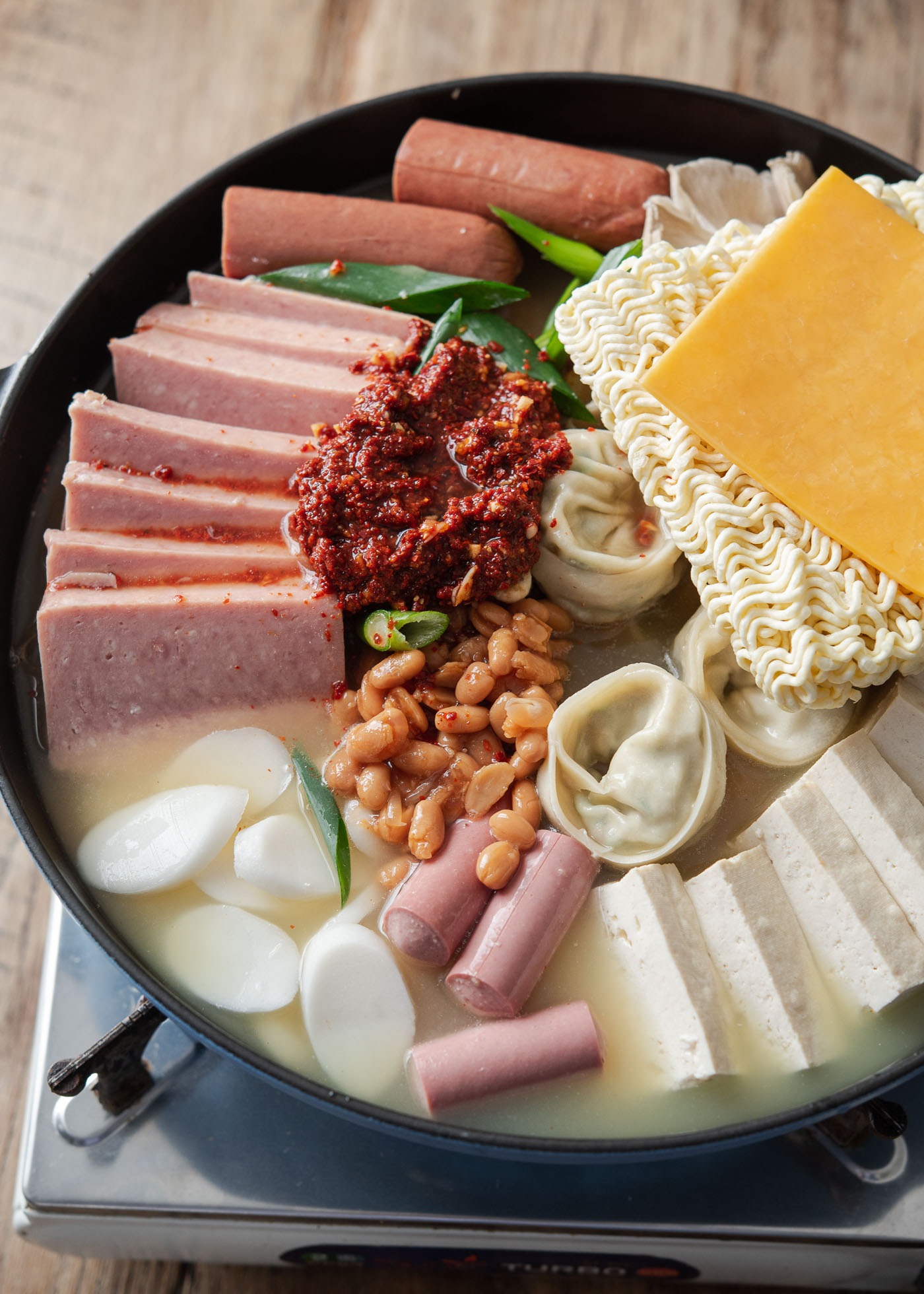
Step 3. Add noodles and stock.
- Add noodles, cheese, and the prepared sauce. Pour stock just enough to cover the ingredients.
Adding plain water results in bland tasting broth. I recommend using low-sodim (or no-salt) chicken stock instead of water to add more umami and depth to the flavor. If you prefer thick and rich flavor of the soup, try with Korean ox bone soup.
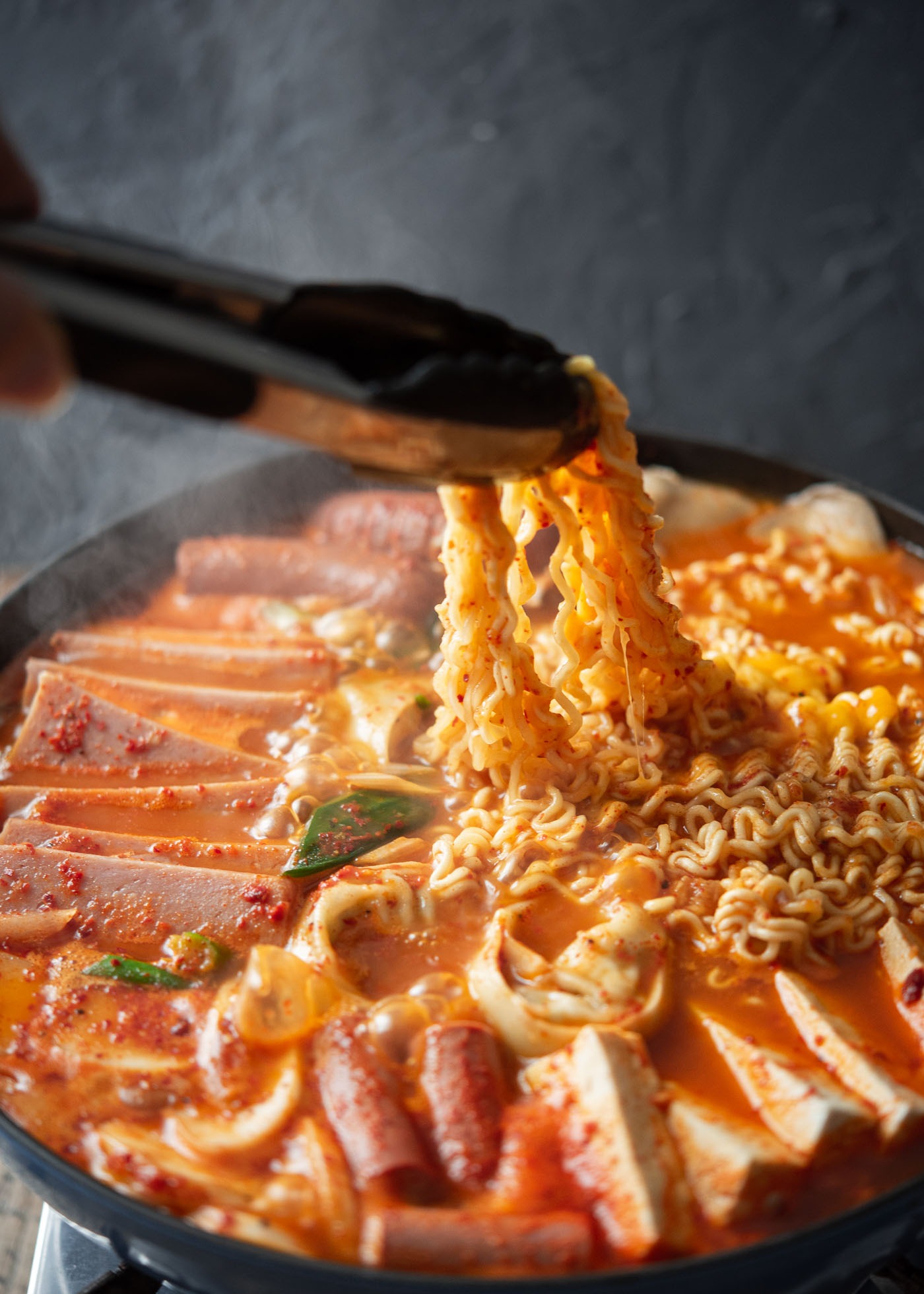
Step 4. Cook to perfection
- Place the pan on the stove (I recommend using a portable burner right on the table) and bring the stew to a boil. Reduce the heat to low and simmer.
- Stir the seasoning paste to distribute it throughout the stew.
- Stir ramen noodles to cook evenly in the simmering stock.
Serving Suggestions
Budae Jjigae is best enjoyed fresh and hot. To get the most out of its rich flavors and textures:
- Noodles First: Dive into the noodles while they’re still chewy; they tend to absorb the broth and can get too soft if left for long.
- Temperature Matters: Serving the stew piping hot straight from the stove enhances its aroma and overall taste.
- Pairings: For a wholesome experience, pair the stew with a side of steamed rice. The rice complements the savory broth and makes for a filling meal.
- Accompaniments: Consider serving with traditional Korean side dishes, like kimchi or pickled radish, to elevate the dining experience. They add a refreshing contrast to the rich, hearty stew.
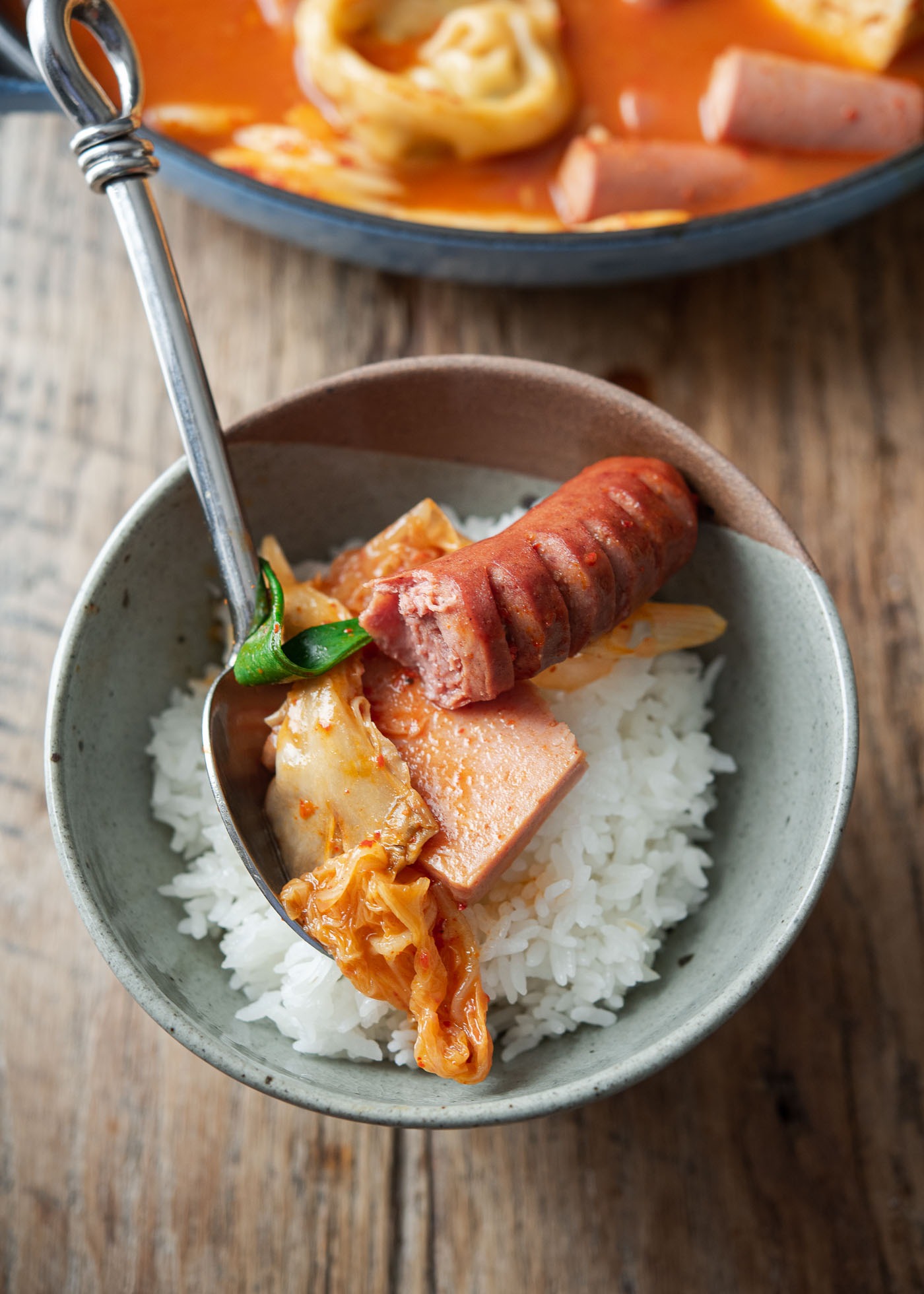
Check out my Korean chicken stew recipe (Dakdoritang) if you are into spicy stews made with braised chicken. Quick sundubu jjigae made with canned tuna is another easy stew that you might like, which only takes 10 minutes to prepare.
More Korean Fusion Dishes
If you want to explore Korean flavors mingled in other global cuisine, these recipes will satisfy your taste palettes:
- Creamy Rose Tteokbokki
- Korean Corn Dog Recipe
- Philly Style Bulgogi Cheesesteak
- Crispy Kimchi Fried Rice with Cheese
- Kimchi Tomato Spaghetti
Tried this Budae Jjigae recipe? Leave a comment below, and share your masterpiece on social media. And don’t forget to subscribe for more recipes. Happy cooking!
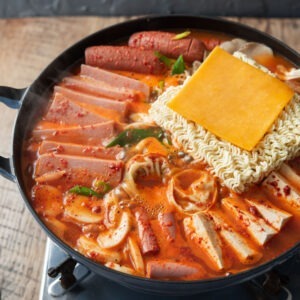
Budae Jjigae: Ultimate Korean Army Stew
Ingredients
For Budae Jjigae sauce
- 3 tbsp Korean chili flakes (gochugaru)
- 1 tbsp Korean chili paste (gochujang)
- 2 tbsp Korean soup soy sauce (gukganjang)
- 1 tbsp soy sauce
- 1 tbsp minced garlic
- 1/2 tsp black pepper
For Budae Jjigae stew
- 12 oz (340 g) can Spam, sliced
- 8 oz (227 g) can pork and beans
- 4.6 oz (130 g) can Vienna sausage, drained
- 3 hot dogs, sliced in half
- 1 lb (450 g) firm tofu, sliced
- 2/3 cup (160 ml) sour kimchi, sliced
- 1/2 onion, sliced
- 3 oz (85 g) mushroom, sliced
- 4 cup (960 ml) chicken stock, low sodium
- 1 instant ramen noodles, noodles only
Optional stew ingredients
- 1 slice cheddar cheese
- 1/3 lb (150 g) ground pork
- 6 frozen dumplings
- 3 oz (85 g) rice cake rounds
- 1/2 Asian leek, sliced
Equipment
Instructions
- To prepare Budae jigae sauce, mix together Korean chili flakes (gochugaru), gochujang, soy sauces, garlic, and pepper in a small mixing bowl; set aside.
- To arrange ingredients in a pan, put slices of onion on the bottom of a shallow pan. Arrange the jjigae fillings (Spam slices, hot dogs, sausage, tofu, mushroom, kimchi, and etc) as you please.
- Add instant ramen noodles, cheese and the seasoning paste. Pour in enough stock to barely cover everything.
- Place the pan on the stove (I recommend using a portable burner right on the table) and bring the stew to a boil. Reduce the heat to low and simmer. Stir the seasoning paste to distribute it throughout the stew. Stir ramen noodles to cook evenly in the simmering stock.
- Serving Tip: When the ramen noodle is soft and chewy, enjoy the noodles first on individual plates or bowls before they get soggy. Then you can serve the stew hot right at the table, dishing out a portion.

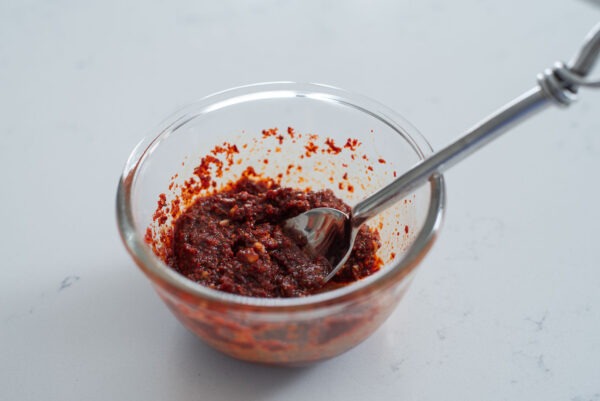
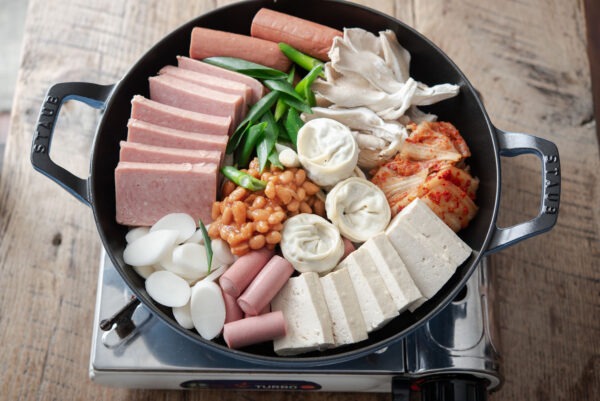
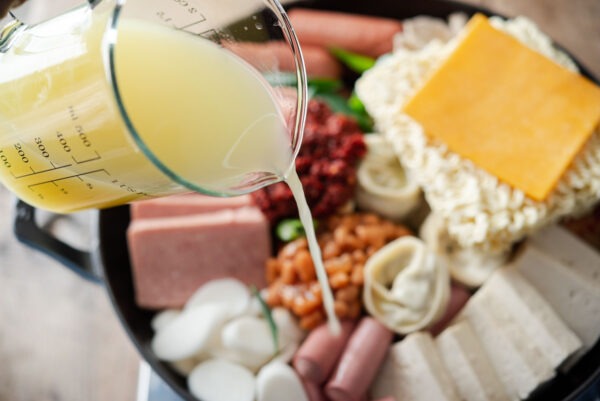
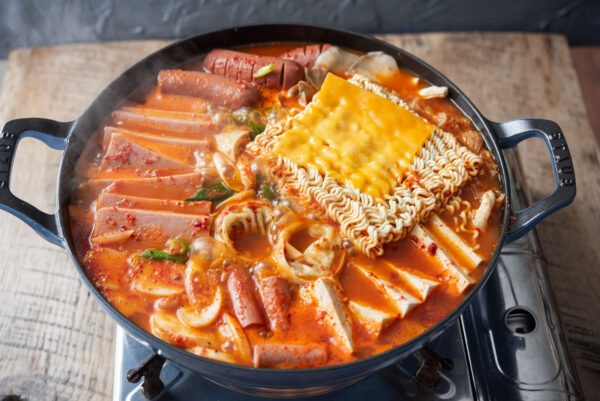
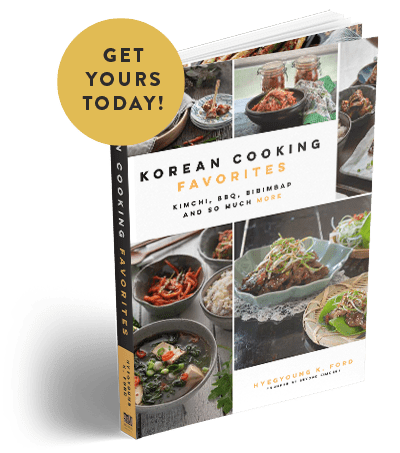
Made the stew a few days ago. It was a total hit. Pan was licked clean in no time. We will definitely be having this again. Extremely convenient. And the onions retain a nice crunch nestled under everything else (I used a bit more 🙂 )
Perfectly spiced, the umami was oooooo mama 🙂
Thank you for sharing!
I am so happy to hear that. Thank you for the comment.
Anything with tofu I love!!! This is gonna be yummy!!!!!
Thank you for sharing this recipe and for sharing the history and meaning behind it.
My step-grandfather served with the US Army in Korea and he never understand why I had such admiration for Korea. He never saw the vibrant and prosperous South Korea that I visited, all that he remembered was the suffering and privation of the Korean people as you describe above. It pained him for years to remember the hunger that he saw.
My mother cooked recipes from the Depression and from the rationing years of WWII that she learned from her mother. And I cook them too and explain to my children where they come from.
On a lighter note, I love natural “fusion” recipes like this. Sharing, adapting, and finding something new – I think this is why we all meet on blogs like this!
Tamar, what a sweet story that is? It is so nice that you were able to hear from your grandfather about the Korean war and what he experienced. I also had my grandmother-in law who grew up in depression time and helped raising 8 brothers. She was one of the most frugal person I have encountered. I learned a lot about being thrifty and frugal. We live in time of abundance and often forget about tough time that previous generation had gone through. A lot of lessons to learn for us.
This is an amazing Stew Holly, I’ve cooked it countless times at it is always so comforting. Thanks for sharing your version! Hope you are doing well.